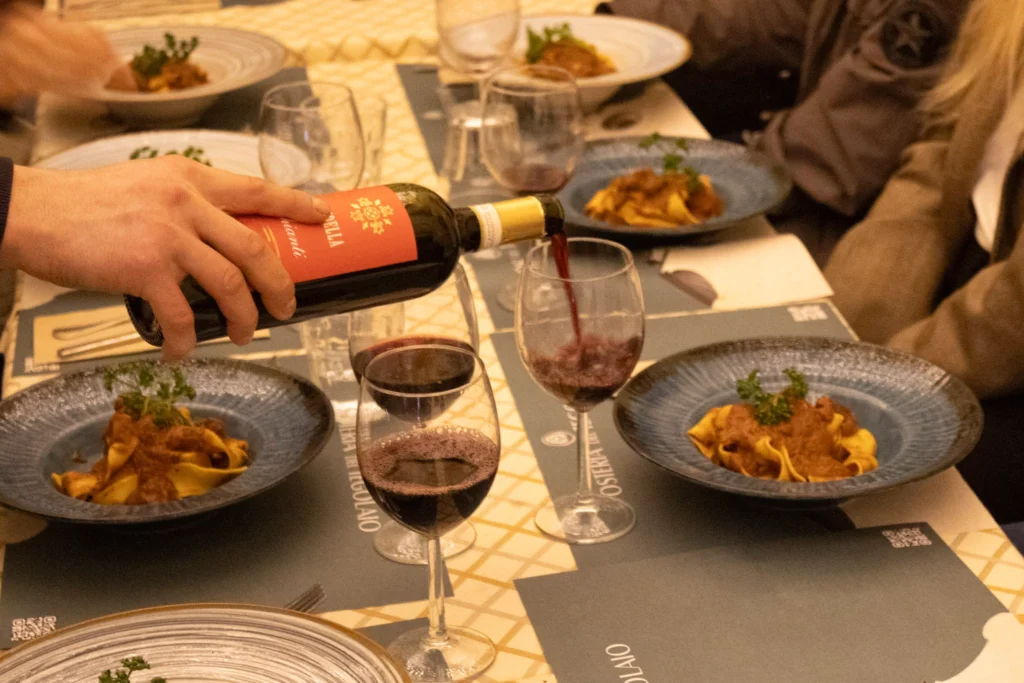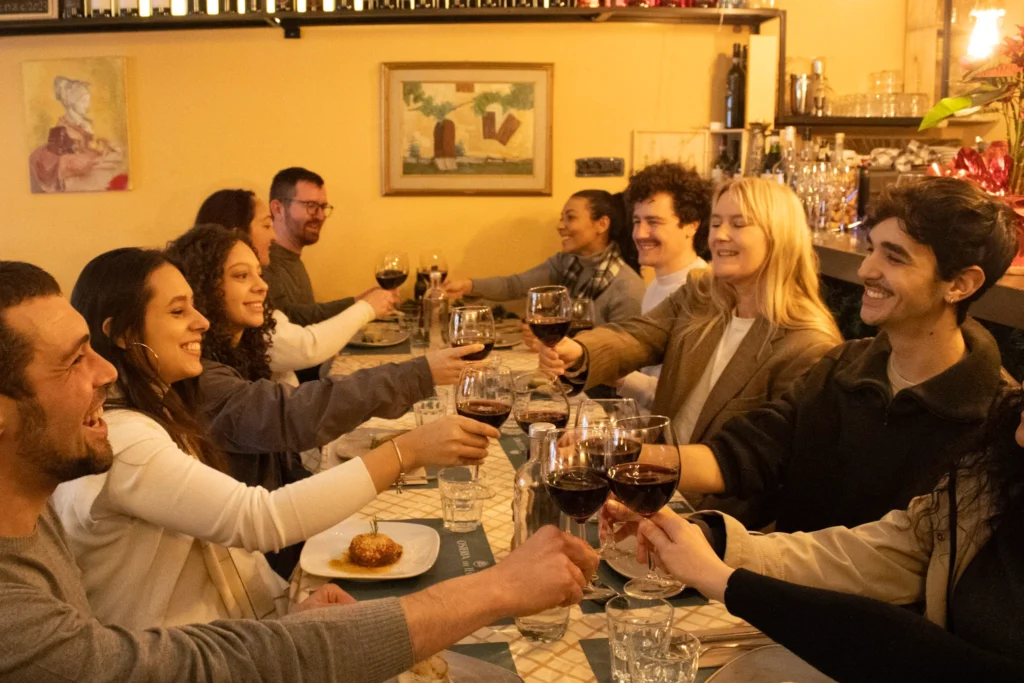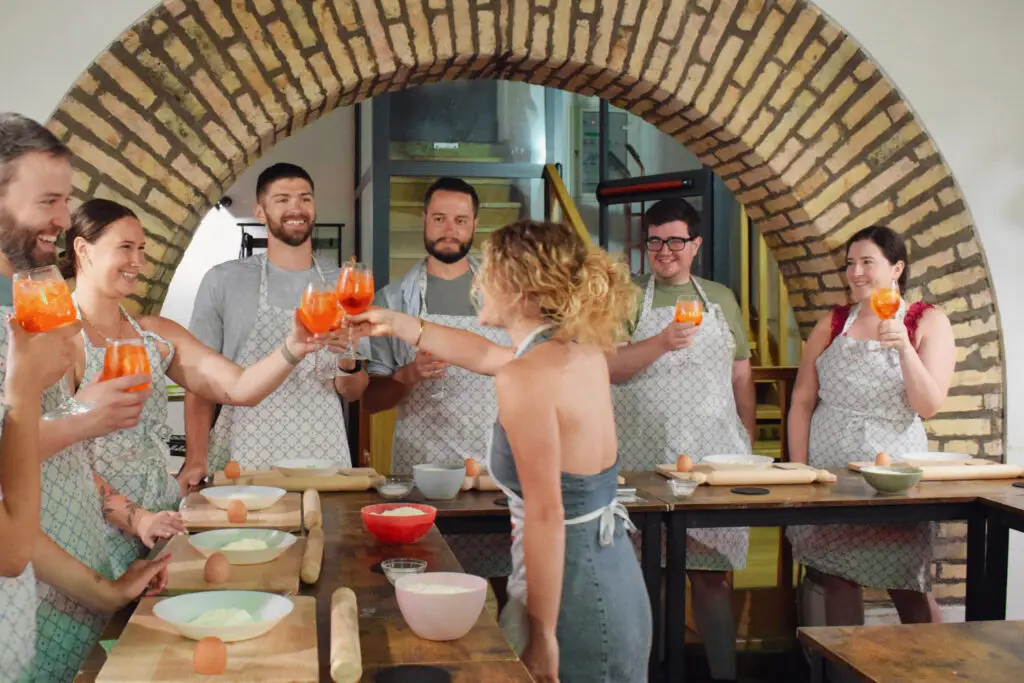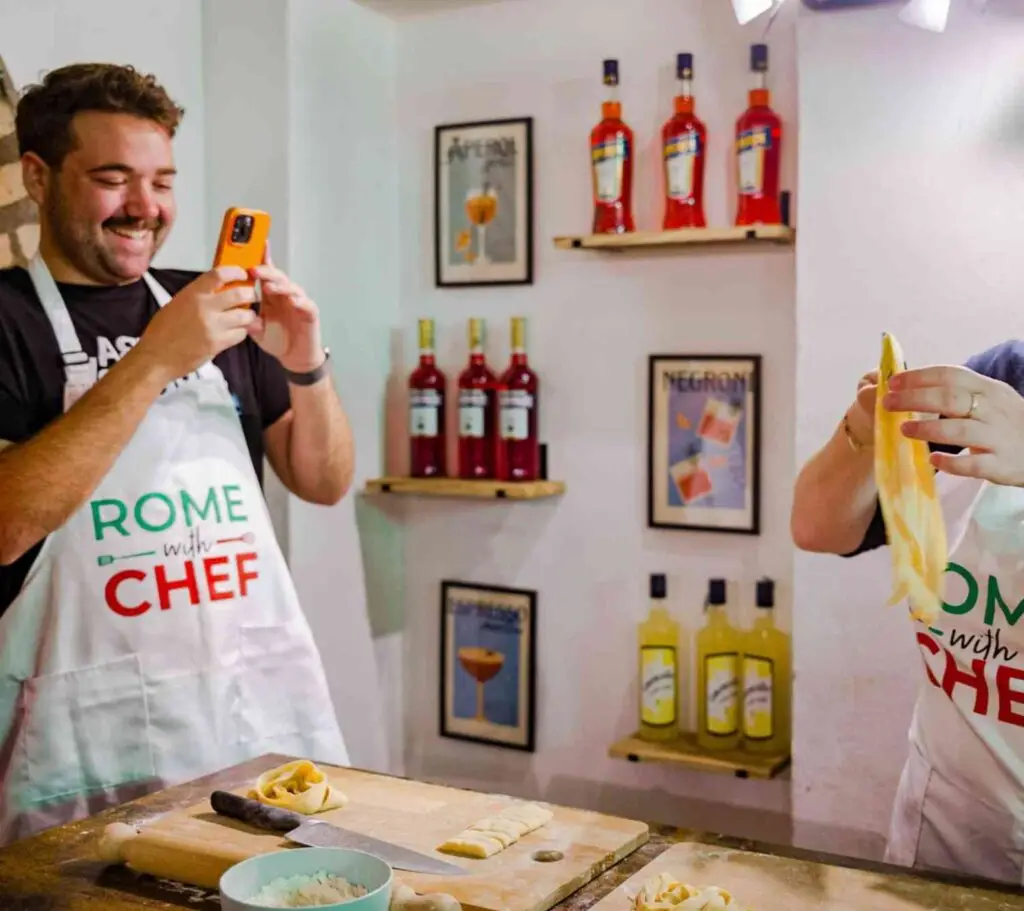Amatriciana is a true homage to the simplicity of Italian cuisine: fresh, simple and so, so tasty!
In the Eternal City of Rome, there are four supreme dishes (piatti) that satisfy the stomachs of Romans and travellers alike — Amatriciana, Carbonara, Cacio e Pepe and Gricia. An authentic Amatriciana recipe is the sauciest and most tomatoey, consisting of just 3 essential ingredients: pork jowl, pecorino cheese, and tomato sauce. Each Roman restaurant will add its own twist, with a sprinkle of chilli here or an extra dash of pepper there. But the basics remain the same.
Here you’ll find a genuine Amatriciana recipe our chefs have been delighting Romans with for decades.
Origins of Amatriciana
Like many Italian recipes, Amatriciana is named after the town it hails from. In this case, that town is Amatrice: a small settlement situated two hours outside of Rome. The quaint town looks upon mountains and green pastures for as far as the eye can see. Perfect for shepherds (or in Italian ‘pastore’) to rear their sheep or pecori which is where the pecorino cheese comes from.
Surprisingly enough for a recipe with so few ingredients, amatriciana has been evolving for a millennium. Amatriciana is the only staple Roman pasta with tomato sauce (no, not Heinz!) Its grandfather came along much earlier, Pasta alla Gricia.
Just after Columbus returned from discovering the Americas in the 1700s tomatoes were introduced into Italian cuisine and turned out to be a massive hit! Pasta alla Gricia was transformed with the addition of fresh chilli or peperoncino fresco and of course, the most integral part tomato sauce or pomodoro al sugo.
Amatriciana is still so widely loved that when an earthquake struck the city of Amatrice all profits made from Amatriciana were given in aid to rebuild the town. Now if that’s not Italian resilience then we don’t know what is.
Guanciale or Pancetta
The differences between guanciale and pancetta are immense and you’d do well to remember this whilst speaking to an Italian…
Authentic Roman guanciale is made from the pork jowl then rubbed in salt and black pepper into the outer layer and leaving it for approximately three weeks to dry or until it loses 30% of its weight.
People often (mistakenly) use pancetta in place of guanciale to make Amatriciana. Pancetta actually comes from the pancia (the stomach) while it is used in some pasta recipes in Italy the Roman region is not one of them. But if you don’t have access to guanciale in your home country, you can give it a go with pancetta, then visit Rome and make the real one yourself with one of our Pasta and Tiramisu Classes.
Authentic Amatriciana Recipe
Spaghetti is the obvious choice of pasta to ensure you get that satisfying whip of sauce.
However, you’re also welcome to use bucatini, rigatoni, tonarelli, or even penne.
Time: 20 minutes
Serves: 2 people
Difficulty: Easy
Ingredients
- – 320g (11oz) Spaghetti
- – 400g (14oz) Canned Whole Peeled Tomatoes
- – 150g (5oz) Pork Jowl guanciale – cut into small cubes, keep the rind to one side
- – 75g (2.5oz) Pecorino romano (DOP, da grattugiare)
- – 50g White Wine vino bianco
- – Fine Ground Salt to taste
- – 1 Fresh Chilli peperoncino fresco
Method
- Bring a large pot of salted water to a boil. Add the spaghetti and cook according to the package instructions until al dente.
- While the pasta is cooking, heat a large skillet over medium heat. Add the rind fat side facing and cook until the fat melts, add the white wine and allow it to evaporate then remove the rind. Take the cubed guanciale and cook until crispy and golden, about 5-7 minutes. Remove from heat and set aside.
- Once the pasta is done see the packet for cooking time, reserve about 1 cup of pasta water and then drain the pasta.
- Add the hot pasta to the skillet with the tomato sauce and remove the chilli pepper (off the heat) and toss to combine.
- Divide the pasta among plates and top with grated Pecorino Romano and freshly ground black pepper.
Top Tips: Cook some extra cubed guanciale to garnish for an extra crispy finish.

Where to Eat Astounding Amatriciana in Rome
Since we’re pasta aficionados, we’ve published this list of the best pasta restaurants in Rome. But if you’d rather get to know other foodies while making memories and avoid the tourist traps then join us on our Trastevere Food Tour! Let Trastevere’s medieval streets enchant you while you discover the most delicious food in Rome. Don’t take our word for it, check out what other travellers are saying:
Learn an authentic Amatriciana recipe on a Private Cooking Class
Rome with Chef’s cooking classes offer fun, immersive ways to master real Roman cooking.
Our family-friendly pasta and tiramisù class specialises in carbonara and cacio e pepe recipes, but you can learn to make others by booking a private pasta cooking class. Whichever class you choose, you’ll be welcomed at our central air-conditioned school by a professional chef, a glass or two of prosecco, and plenty of expert insights into Italian cooking. Oh, and you’ll enjoy a sit-down meal at the end of the class during which you’ll get to enjoy the meal you’ve made.
Visitors rate our cooking classes among their top experiences in Rome. But don’t just take our word for it! See what people are saying!







